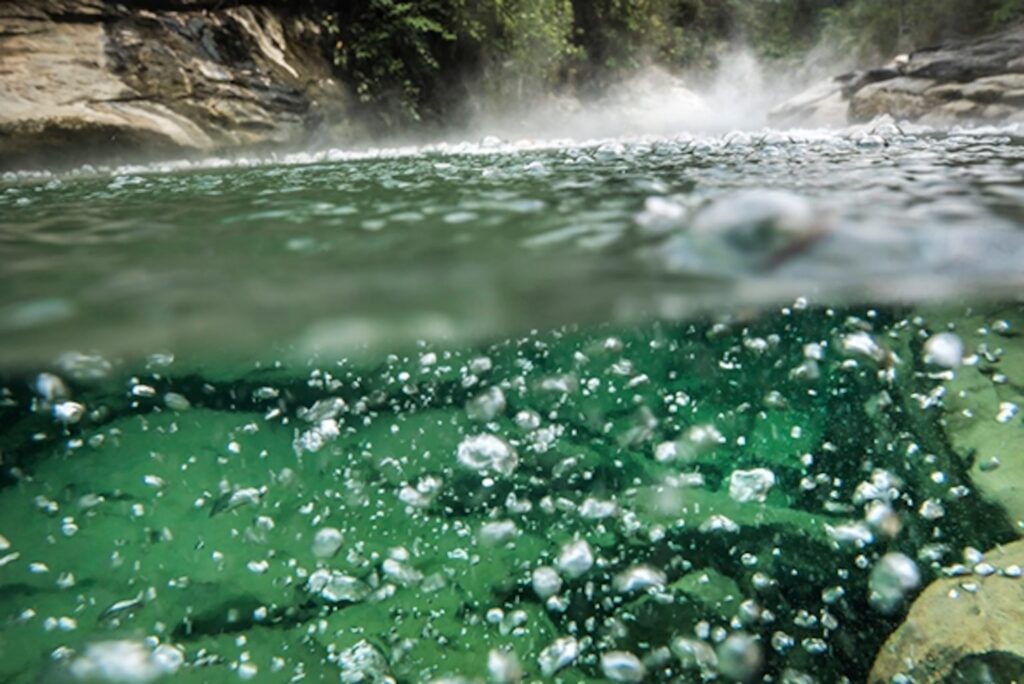Deep in the heart of the Peruvian Amazon, beyond the reach of highways and casual hikers, a river flows with a mystery that has baffled scientists and captivated adventurers. Its waters don’t just shimmer in the jungle heat—they boil. Literally.
Known locally as Shanay-Timpishka, or “Boiled with the Heat of the Sun,” this river can reach temperatures up to 200°F (93°C)—hot enough to scald skin, cook small animals alive, and defy everything we thought we knew about geothermal activity in the Amazon. It’s one of the strangest and most awe-inspiring natural wonders on Earth. And unlike Yellowstone’s geysers or Iceland’s hot springs, it has no obvious volcanic origin.
Welcome to the Boiling River of the Amazon: a place where myth meets mystery and science still seeks answers.
The Discovery That Shook Assumptions

For centuries, local Asháninka tribes knew of the river and its powers. It was sacred ground, used in traditional ceremonies, and approached with reverence. But to the outside world, it was largely unknown—assumed to be legend, like stories of El Dorado or rivers of gold.
That changed in 2011, when Peruvian geoscientist Andrés Ruzo became the first scientist to study the river extensively. His childhood memory of his grandfather describing a “river that boils” sparked curiosity that refused to fade. He set out to find it—and remarkably, he did.
Ruzo’s research confirmed what few had believed: the river was not a hoax, not a legend, but a real hydrothermal system in the middle of the non-volcanic Amazon Basin. It stretches about 4 miles (6.4 kilometers), with widths up to 80 feet and depths of 16 feet in some areas. But what makes it truly extraordinary is the heat—consistent, steaming, and dangerously real.
Nature’s Hot Secret
The big question: Why is it boiling?
Most hot rivers or geothermal features on Earth are associated with volcanic activity—magma heating underground water sources which rise to the surface. But the Boiling River is located more than 400 miles from the nearest active volcano. So where is the heat coming from?
Ruzo and other researchers propose that the heat originates from deep geothermal faults. Rainwater seeps through cracks in the Earth, traveling deep enough to be heated by the planet’s geothermal gradient. This superheated water is then forced back to the surface through a fault system, mixing with the river and causing the extreme temperatures.
Still, this theory only partially explains the scale and consistency of the river’s heat. The Boiling River remains one of the few known examples of such a powerful hydrothermal system in a non-volcanic zone—making it an ongoing source of fascination for geologists worldwide.
A Deadly Beauty

From a distance, the Boiling River appears like any other Amazonian waterway—lush green banks, swirling currents, and a serene canopy overhead. But as you approach, the illusion fades. Steam rises in columns. The air grows thick and humid. The water hisses and bubbles, like a vast natural cauldron.
Touching the water in certain places can cause immediate burns. Small animals that fall into the river are often boiled alive. Leaves that land on the surface curl and blacken within seconds. It’s not a place to swim—it’s a place to witness.
Yet, strangely, life persists along its edges. Certain mosses and thermophilic microorganisms thrive in the steaming environment, adapting to the extreme conditions. For scientists studying extremophiles—organisms that live in environments previously considered uninhabitable—the Boiling River is a natural laboratory with untapped potential.
Cultural Connection
To the Asháninka people, the river is more than a scientific curiosity. It is sacred, spiritual, alive. Local shamans believe it is protected by powerful spirits and use its waters in healing rituals. The name Shanay-Timpishka translates to “heated by the sun’s spirit,” reflecting a cosmology where nature is animated, interconnected, and deserving of respect.
These indigenous perspectives offer valuable insight—not only into the river’s cultural meaning, but into a worldview that treats ecosystems as whole, conscious entities. As modern science works to decode the Boiling River’s secrets, indigenous knowledge reminds us of something equally important: the need for humility in the face of nature’s mysteries.
A Place Under Threat

Despite its remote location, the Boiling River is not immune to human impact. Illegal logging, deforestation, and oil exploration have crept ever closer to its banks. Roads built for extractive industries threaten the fragile ecosystems surrounding the river, and with them, the cultural heritage of the indigenous communities who call this place home.
Andrés Ruzo has since become an advocate for protecting the river—not just as a geologist, but as a conservationist. He launched the Boiling River Project, aimed at preserving the river and educating the public about its significance. His work bridges science, culture, and activism, showing that discovery comes with responsibility.
Final Reflections
The Boiling River of the Amazon is a rare confluence of science, mystery, and myth. It challenges assumptions, demands respect, and invites deeper questions about the natural world. How many other wonders remain hidden in the dense green fabric of the rainforest? How much don’t we know?
In an era where every corner of the Earth seems charted and geotagged, the Boiling River is a humbling reminder: nature still holds secrets. And when we find them, we must protect them—not just for science, but for the stories, cultures, and ecosystems that give them meaning.
